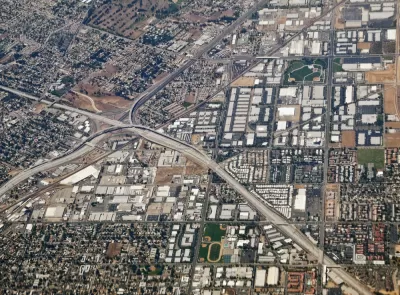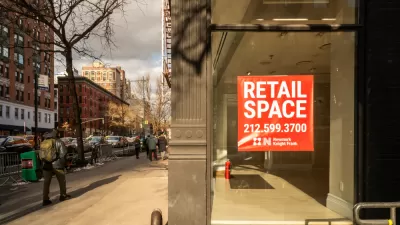The Inland Empire's housing boom and economic growth are attracting plenty of new residents—especially millennials.

By 2046, California's suburban Inland Empire is projected to have two million more residents. Perhaps most interestingly, a large portion of those people are expected to be millennials.
The Inland Empire has consistently led California's population growth for more than a decade, even during the recession and housing crisis. For Ron Loveridge, director of the Center for Sustainable Suburban Development at UC Riverside, the reasons behind this migration are fairly simple. For one, he tells The Planning Report: "Prices are too high on the coasts." And for another: The Inland Empire is actually building housing.
"Housing development is increasing, and the construction industry has become a major source of employment," Loveridge explains. "If you're looking for large amounts of new housing in the greater Los Angeles area—whether single-family or rental—you have to look east. That means you have to look at San Bernardino County and Riverside County."
Millennials nationwide are choosing to live in suburbs, which in turn are adapting to meet their preferences. Inland cities, Loveridge says, are delivering housing that's bigger and more affordable than what an urban core can offer—plus sustainability initiatives, open space, and "community dynamics". Downtown Riverside, for example, is "beginning to see more coffee shops and small arts groups…—that coveted 'millennial livability' taking shape."
There's more going on in the Inland Empire than housing: The newly rebranded Ontario Airport is on track to be the "single most important driver of the inland economy;" the region's traditional industries, manufacturing and logistics, are both facing major technological disruption. Clean energy policies have also created jobs and economic activity, and Loveridge hopes that UC Riverside—which recently opened new schools of medicine and public policy—will act as an anchor for the growing regional economy.
FULL STORY: Inland Empire's 21st Century Economic Goals: Jobs & 'Millennial Livability'

Study: Maui’s Plan to Convert Vacation Rentals to Long-Term Housing Could Cause Nearly $1 Billion Economic Loss
The plan would reduce visitor accommodation by 25,% resulting in 1,900 jobs lost.

North Texas Transit Leaders Tout Benefits of TOD for Growing Region
At a summit focused on transit-oriented development, policymakers discussed how North Texas’ expanded light rail system can serve as a tool for economic growth.

Why Should We Subsidize Public Transportation?
Many public transit agencies face financial stress due to rising costs, declining fare revenue, and declining subsidies. Transit advocates must provide a strong business case for increasing public transit funding.

How to Make US Trains Faster
Changes to boarding platforms and a switch to electric trains could improve U.S. passenger rail service without the added cost of high-speed rail.

Columbia’s Revitalized ‘Loop’ Is a Hub for Local Entrepreneurs
A focus on small businesses is helping a commercial corridor in Columbia, Missouri thrive.

Invasive Insect Threatens Minnesota’s Ash Forests
The Emerald Ash Borer is a rapidly spreading invasive pest threatening Minnesota’s ash trees, and homeowners are encouraged to plant diverse replacement species, avoid moving ash firewood, and monitor for signs of infestation.
Urban Design for Planners 1: Software Tools
This six-course series explores essential urban design concepts using open source software and equips planners with the tools they need to participate fully in the urban design process.
Planning for Universal Design
Learn the tools for implementing Universal Design in planning regulations.
City of Santa Clarita
Ascent Environmental
Institute for Housing and Urban Development Studies (IHS)
City of Grandview
Harvard GSD Executive Education
Toledo-Lucas County Plan Commissions
Salt Lake City
NYU Wagner Graduate School of Public Service





























